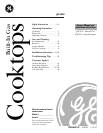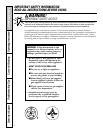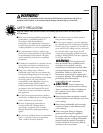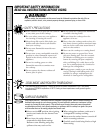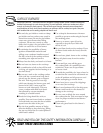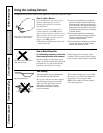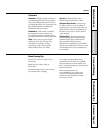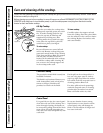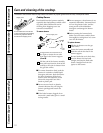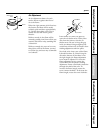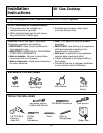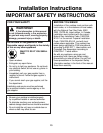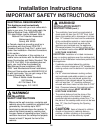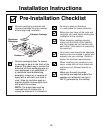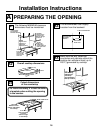
Safety Instructions
Operating Instructions Care and Cleaning
Troubleshooting Tips Consumer Support
Cookware
Aluminum: Medium-weight cookware is
recommended because it heats quickly
and evenly. Most foods brown evenly in
an aluminum skillet. Use saucepans with
tight fitting lids when cooking with
minimum amounts of water.
Enamelware: Under some conditions,
the enamel of some cookware may
melt. Follow cookware manufacturer’s
recommendations for cooking methods.
Glass: There are two types of glass
cookware: those for oven use only
and those for cooktop cooking
(saucepans, coffee and tea pots).
Glass conducts heat very slowly.
Cast Iron: If heated slowly, most
skillets will give satisfactory results.
Heatproof Glass Ceramic: Can be used
for either surface or oven cooking. It
conducts heat very slowly and cools very
slowly. Check cookware manufacturer’s
directions to be sure it can be used on
a gas cooktop.
Stainless Steel: This metal alone has
poor heating properties and is usually
combined with copper, aluminum or
other metals for improved heat
distribution. Combination metal skillets
usually work satisfactorily if they are used
with medium heat as the manufacturer
recommends.
7
ge.com
Home Canning Tips
Be sure the canner is centered over
the burner.
Make sure the canner is flat on
the bottom.
To prevent burns from steam or heat,
use caution when canning.
Use recipes and procedures from
reputable sources. These are available
from manufacturers such as Ball
®
and
Kerr
®
and the Department of Agriculture
Extension Service.
Flat-bottomed canners are
recommended. Use of water bath
canners with rippled bottoms may
extend the time required to bring
the water to a boil.



